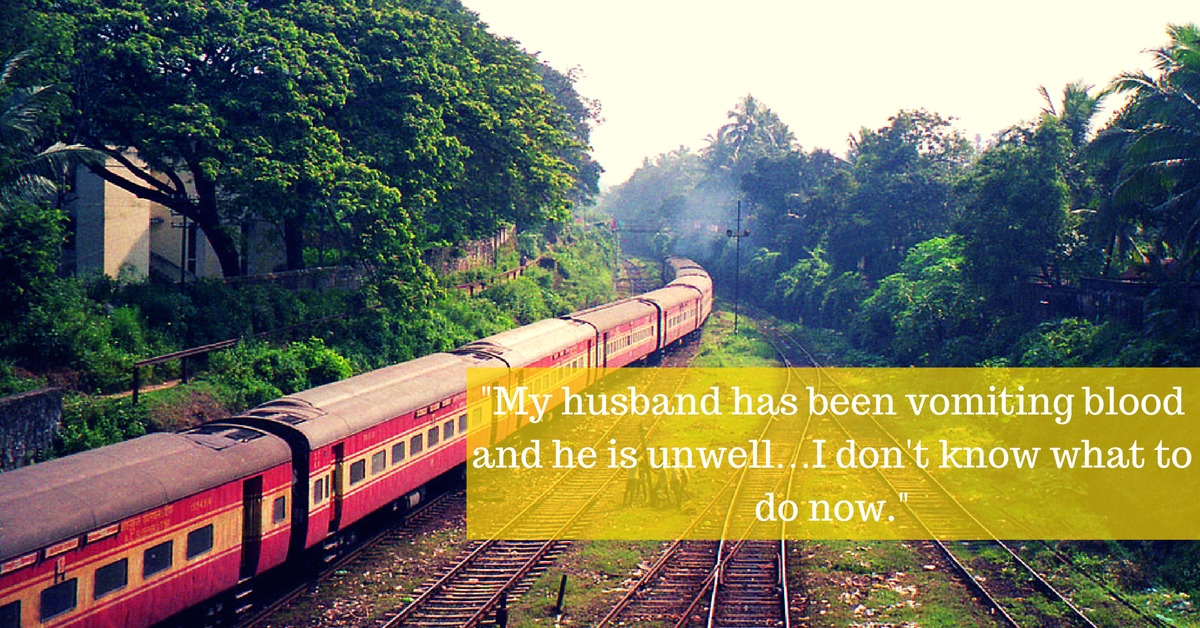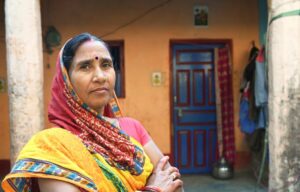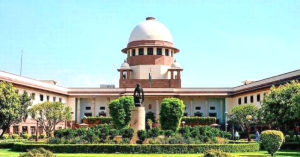One Man’s Extraordinary Journey and What Indian Railways Could Learn from It!
An eventful train journey left Kannan Sundararajan wondering about all that Indian Railways needs to do to make trains safer and more comfortable for all.

An eventful train journey left Kannan Sundararajan wondering about all that Indian Railways needs to do to make trains safer and more comfortable for all.
September 10, 2016. Train number 17604. Kachiguda Express. I was on my way to Hyderabad from Bangalore.
It was around 11.15 pm when I woke up from my already disturbed sleep for two reasons. Firstly, the roof lights were on. Secondly, amidst the quiet humming noise of the AC sleeper coach and the constant titak-titak-titak-titak from the running train, I heard someone coughing. When I opened my eyes, I saw a lady in burqa seated on the side lower berth with a man sitting next to her. The man was holding a kerchief to his mouth and was slowly coughing into it while the woman appeared to be consoling him.
I got up and requested the lady to turn off the lights. The lady responded in Hindi and said, “My husband has been vomiting blood and he is unwell…I don’t know what to do now.”

Picture for representation only. Source: Flickr
Hearing this, I was thrown off from my sleep-induced daze and felt a growing sense of uneasiness. I went down to assess the situation and see if I could assist them in any way. I asked the lady about her husband’s condition. As she spoke, she took out his medical records file from her bag. I opened the file and found a document that had “Department of medical oncology, discharge summary” printed on it. It was issued by Omega Hospitals. I understood that they were on their way to Hyderabad to get chemotherapy treatment for the man.
I really couldn’t understand the medical terms typed in the discharge summary but was able to comprehend that he was getting treated for a carcinoma on his tongue. It struck me that he could be bleeding from his mouth while they were panicking about blood-vomit, which was a much more serious issue. I was driven by the situation and was in a hurry to find some help.
Since April 2016, when I responded to an accident victim and saved his life, I have started paying a lot of attention on first-aid and emergency response topics. I’ve also started a few social initiatives to raise public awareness on the same. In theory, I know a variety of first-aid procedures applicable to injuries due to accidents and for a few commonly occurring medical conditions. However, a cancer victim possibly vomiting blood was something I had only seen in the movies and had no idea about what procedures to follow under these circumstances.
I opened Google maps in my phone to find out the exact location of our train. The train had just crossed a place called Veldhurhi and the next closest station was Kurnool, around 35 km away. With some luck, I was able to dial the Omega Hospital emergency number found in the discharge summary. The call was received and an operator connected me to the doctor on emergency duty. I explained the situation, shared the patient number and asked for guidance. The doctor on duty advised me to immediately admit him to the nearest hospital to get the bleeding arrested. He also asked me to have him sit or stand till he gets to the hospital to prevent choking.
I then rushed to the adjacent compartments to look for the TTE (Train Ticket Examiner) to see if he could alert the station authorities at Kurnool and arrange for an ambulance or doctor to be present.

Picture for representation only. Source: Flickr
After passing through three compartments I was relieved to see the TTE, Mr. Janardhanan. I explained the situation and urged him to make some calls to get some help. He appeared very calm, accompanied me to meet the couple and asked them if they wanted to request any doctor.
He appeared to be following some protocol. I learnt later that the TTE is accountable for stopping a train for any emergency and must answer a lot of questions before the authorities. He dialled a number, spoke in Telugu, explained the situation and requested the presence of a doctor.
Meanwhile, I asked the TTE to look for any doctors travelling in the train. From the passenger manifest, we were lucky to find a doctor, Dr. V Rao, travelling in the first class compartment. I assured the lady that I’d get some support and with the TTE, rushed towards the first class compartment.
We had crossed only two compartments when I was jolted to find a very old man in white shirt and white trousers lying down in the vestibule on the floor between the compartments. His head was down, his tongue was out and he was leaning on the toilet wall. I sprinted to him and started tapping his shoulder. I shouted and asked if he was ok. I checked his shirt pocket to see if he had any ID and to my disappointment there was none on him. He was still breathing, though.
By then, I had begun to wonder what I had gotten myself into. It all started with a man with cancer and bleeding and within a few minutes, in another location we had another emergency situation involving an old man.

Picture for representation only. Source: Flickr
The man started responding and moved his head. He could barely open his eyes and was trying to lift his right hand, as if in a bid to get up from there. I kept asking him about what really had happened and if he was hurt. He appeared to be fine and I thought he probably had fallen down in between the vestibules due to the constantly shaking floor between the compartments. He was really old too. I palpated his spine to look for injuries but found no signs of it. It also struck me that he was probably running low on sugar.
While he was lying down, I requested the TTE to go to the AC compartment and find out who he was travelling with. The man was traveling with his wife and she had no idea that her husband had fallen outside the compartment. With the help of the TTE, I took him back to his berth. His wife confirmed his diabetic condition and that was the likely reason behind the drop in his sugar levels. She also said that he had probably taken a sleeping pill.
With the cooperation of fellow passengers, we tried to feed him something. He showed a bit of reluctance in the beginning but soon started eating. I made him lie down in the recovery position, measured his pulse and found it to be alright. It soon transpired that the 69-year-old lady and her husband, 79 years, were returning to Hyderabad from Puttaparthi. She had dozed off for a while and it must have been then that the old man decided to use the bathroom and fell down. From all accounts, he had been lying there for more than 20 minutes, unattended.
All of a sudden, we realized that we still had to find a doctor to help the man with cancer. Now that the situation here was under control, I asked the TTE to take me to the doctor. He flipped the manifest again and said, “Sir – problem…this old man is Dr. V Rao – seat number 11 LB.” At that time the train was probably 15 minutes away from Kurnool. We went back to the couple and gave them further assurance of some support in Kurnool. I then decided to call 108 and was connected to an operator. I explained the situation and requested him to send an ambulance to the Kurnool station within the next 10-15 mins. In the meantime, the lady had contacted some of her relatives living in Kurnool and asked them to reach the station. I was getting anxious. At the Kurnool station, the train pulled in and the couple got down. They bid good bye and I prayed to God to take care of this man and his family, and decided to catch up on some sleep.
The train finally arrived at Hyderabad in the morning. I ran towards the first class compartment to meet the old couple. I was so happy to find the doctor and his wife slowly walking towards the exit with their bags. The doctor was looking absolutely fine. His wife thanked me and introduced me to her husband. He seemed completely clueless about the series of events of the night before and the amount of panic and confusion he had managed to create. I offered my help to carry their suitcase and bag till the exit and also requested them to pose with me for a selfie. They obliged with a smile. We chatted while walking towards the exit and ironically, I found out that this doctor was an oncologist.
Six things to change in the Indian Railways system:

Picture for representation only. Source: Flickr
This train ride and the entire experience kept me agitated about the uncertainties that we have to deal with, every day of our lives. It has also got me wondering about the safety of the medically vulnerable population and fragile senior citizens travelling in India, especially those using public transportation. Since the system around us is not particularly congenial and has no science behind its design, it is prudent for us as citizens to be prepared. But it is also my humble request to the Railway Minister to bring about drastic reforms to make our train journeys memorable and safe. These are a few points to ponder on:
1. If you are diabetic and have had a history of hypoglycaemia (abnormally low sugar), it is absolutely necessary to wear or carry a medical tag or an ID explaining your medical condition. Also don’t forget to carry a sachet of sugar or a small candy in your pocket. Indian Railways should have Emergency Response kits in the trains – they could be kept under the care of the TTE but it is a must. All TTEs and train attendants should also be trained in providing first-aid and CPR.
2. The Indian Railways, the world’s largest rail network, does not have any means to help in medical emergencies such as cardiac arrests or to deal with incidents such as those I experienced during this ride. There are no visible signs indicating where the first-aid kit is located, if at all. Access to AEDs (automated external defibrillators) is unthinkable.
3. There is no easy mechanism to find where the TTE is located in the train at any certain point in time. There is no emergency phone either (mobile signal is not always available throughout the train routes). The Indian Railways could share the mobile number of the TTE via SMS with all passengers just before the departure along with train departure/arrival details. This can happen at every station and also when the TTE changes.
4. The vestibules connecting the trains are extremely dangerous. The pathways leading to the toilets have no hand rails to support sick and senior citizens. This must be redesigned considering the safety of all types of passengers.
5. There are no emergency contact numbers written on the posters stuck inside the train. Indian Railways only wishes you a safe journey but does not appear to have any mechanism to make it safe. Like 108, the Indian Railways should have an emergency number only for the train travellers.
6. If your parents are old or have any medical condition, please don’t allow them to travel without any support system. Indian Railways on its part must insist that all travellers declare their medical condition while making the reservations.
Postscript:
After returning to Bangalore, I called the lady whom I met in my compartment to enquire after the condition of her husband (the man with cancer). After getting down at Kurnool, they went to a hospital and got him admitted. His bleeding was arrested and he had been released after three days of treatment; they had already gone back to Guntakal (their home town). It was shocking to know that this man was just 45 years old and was suffering from tongue cancer because of chewing Gutka for many years. He was diagnosed with cancer four years back and underwent surgery, but the cancer has relapsed now. As I recall the incidents of that night, I would also like to thank Mr. Janaradhanan, the TTE for providing all the assistance that he could, despite the limitations in the system.
Like this story? Or have something to share? Write to us: [email protected], or connect with us on Facebook and Twitter.
NEW: Click here to get positive news on WhatsApp!
This story made me
- 97
- 121
- 89
- 167
Tell Us More
We bring stories straight from the heart of India, to inspire millions and create a wave of impact. Our positive movement is growing bigger everyday, and we would love for you to join it.
Please contribute whatever you can, every little penny helps our team in bringing you more stories that support dreams and spread hope.



















